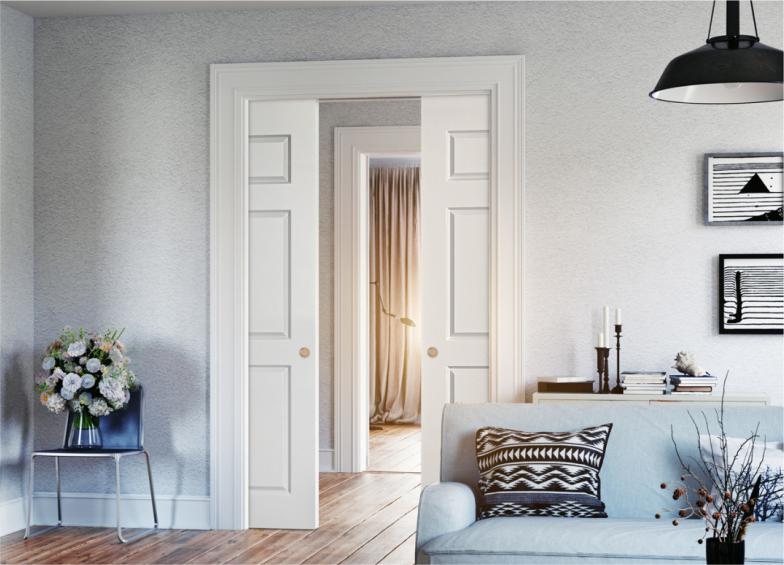Choosing door materials for pocket door systems
If you are installing a pocket door system there is a lot to think about. This predominantly involves choosing the right size of pocket door, but also includes materials. When considering the right materials for your pocket door you need to think about:
- Visual appeal – What do you want your pocket door to look like and will it fit in with its surroundings?
- Functionality – How does the material impact on how you use your pocket door? And what key operations do you want the pocket door to undertake? What is the right material for that?
- Compatibility – Of course your pocket door needs to be the right size and dimensions for the space you have reserved for your pocket door, so how does the material affect that?
- Hardware – What hardware do you want to use and is it suitable for the material you want to use?
The different materials used in pocket door systems
When choosing the right materials for your pocket door, it is important to have a good understanding of how the typical pocket door system works and how it is put together. Here we have outlined the different materials commonly used to construct a pocket door system and the options you have for the door itself.
- Steel – The pocket door frame system is usually made completely from steel. This is likely to be galvanised steel which is strong, robust and long-lasting. The frame system comes in pre-cut sections which are easily clicked together to form the framework, which is then installed in the space you have made available. Most of the steel frame is unseen, as it sits in the ‘pocket’ wall cavity. Steel is used mainly because of its strength, but also because it is lightweight and easy to handle. This makes the frame easier to manoeuvre and to fit in the pocket.
- Aluminium – The overhead track that the door runs on is usually made from aluminium. This is another type of lightweight metal and also has good anti-corrosion properties, so this helps with the durability of the system.
- Wood – The material most associated with pocket doors is wood, or more specifically timber. This is the classic material of choice for a pocket door as it looks natural and traditional, but also has good thermal and soundproofing qualities. Wood is very versatile in that it can look good in many different settings, but also because it can be sanded down and either painted, stained or varnished to change its appearance. Wood is very durable and therefore your pocket door will last a long time and be able to withstand damage, as long as you treat it and look after it. It is also possible to use laminated wood, which has a more contemporary look and also helps to protect the door from chips, dents and knocks.
- Fire-treated wood – Fire doors are legally required in many residential and commercial properties, and in this case you would be supplied with a wooden door that is fire-treated. This is usually a denser type of wood, which is tested to withstand the spread of fire for a specified amount of time. This is usually 30 minutes, but some fire-treated woods can withstand fire for longer, such as 60 minutes.
- Glass – The other material option for the pocket door itself is glass. This has an aesthetic appeal for modern buildings because it provides a light and fresh appearance. Glass is useful for small rooms which don’t get much natural light, and makes these rooms more comfortable and practical. Glass provides a sleek and elegant appeal for commercial buildings and for some rooms in a residential setting also. However, glass pocket doors do require more cleaning than other materials, and also there may be some types of hardware that aren’t suitable, or can’t be installed on a glass door. It is possible for glass pocket doors to be used where privacy and security is important, because the door can have a satin opaque finish, which still enables light to shine through to create a bright appearance, but also means you can’t see through it. People also have the option of customising glass pocket doors by having coloured designs or logos incorporated using sandblasting techniques.
Choosing the right material for your pocket door with MB Direct
At MB Direct our full range of pocket door systems provides you with all the information you need regarding materials, specs and sizes. This helps you choose the right pocket door for your home or workplace, so check out our pocket door systems and order online today.